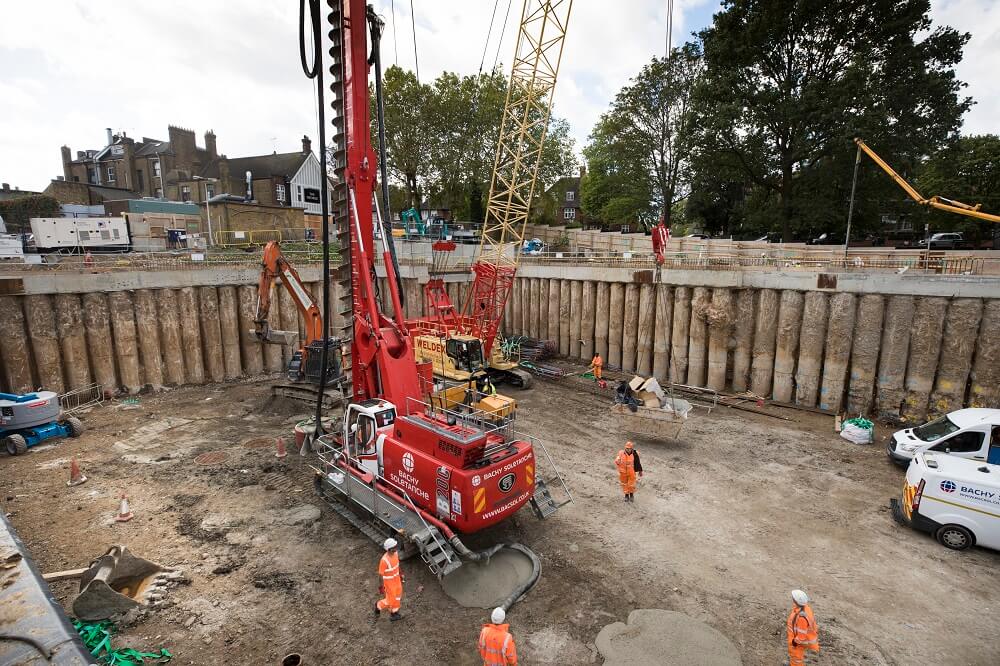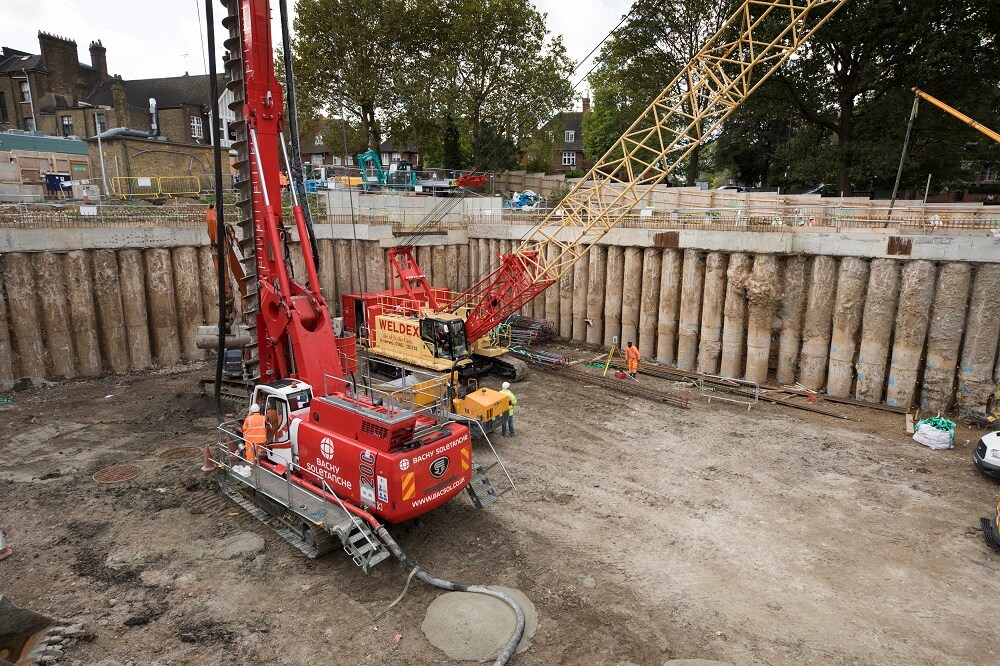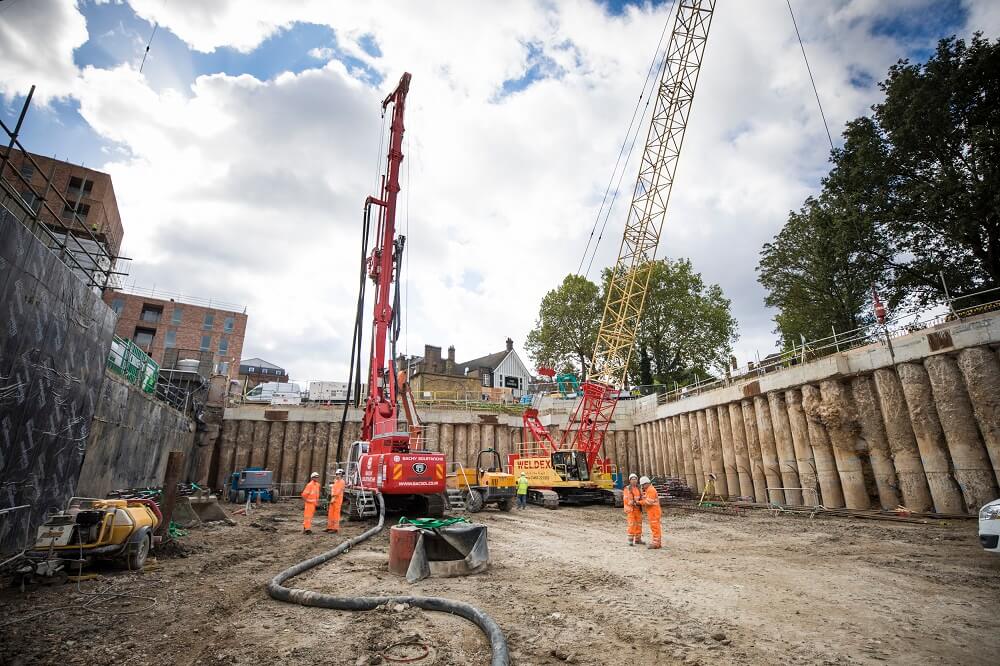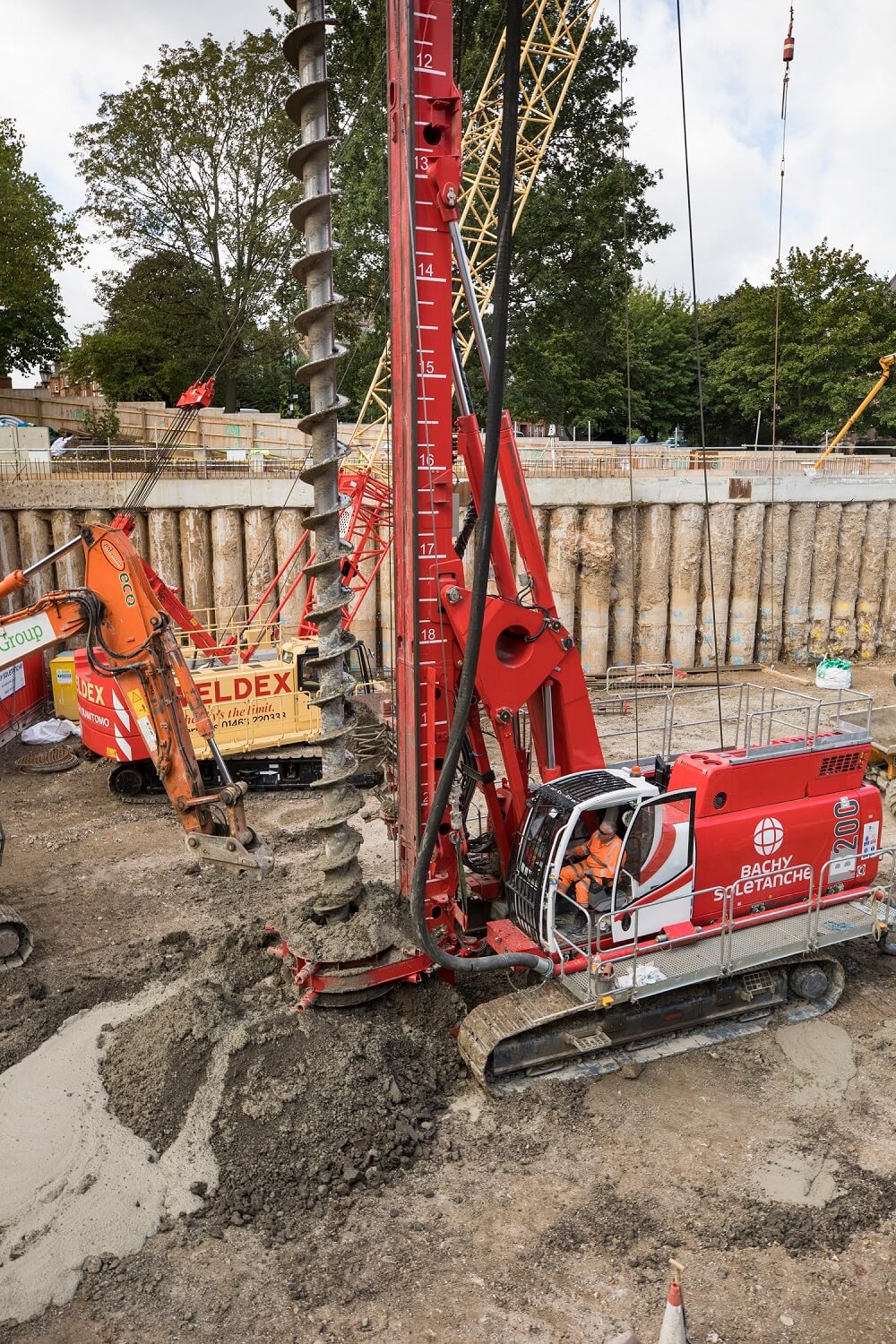Contiguous pile walls are installed using rotary bored or CFA techniques. This type of retaining wall is constructed with spaces between adjacent reinforced concrete piles and is used on a range of engineering or building projects including but limited to road or rail underpasses, underground shafts/tanks, cut and cover tunnels/portals or basements. Contiguous piled walls are used in dry and cohesive soils and are often the quickest and more economic method of constructing retaining walls. In certain ground conditions it may be necessary for the design to incorporate temporary props or ground anchors to provide additional lateral support to the wall.
HOW IT WORKS:
Contiguous bored pile walls are formed by constructing piles using the CFA, LDA or CSP technique. Occasionally, a guide wall is constructed at platform level to aid positional and verticality tolerances. Piles are constructed in a sequence such that no one pile’s integrity is affected by constructing another immediately adjacent pile next. Piles are constructed so that they virtually touch each other with typical gaps of between 50mm-150mm. The soil in the gaps is exposed during excavation and can if necessary be grouted or sealed to form a watertight wall. Normally a secondary lining wall is added to provide a permanent works finish to the wall.
Capability: Depending upon ground conditions, we are able to construct contiguous pile walls to a diameter of 1500mm to a depth of 32m, using CFA piling, or to the diameter of 2800mm (undereams to 7200mm) to a depth of 65m using LDA piling.
Advantages: These can be used for more flexible geometry than a diaphragm wall and are suitable for ground conditions where there is no requirement to exclude ground water and vertical loads can be carried by the wall piles. Contiguous piled walls are suitable and easier to build in load variations as well as minimising installation time, with no requirement for a guidewall.







